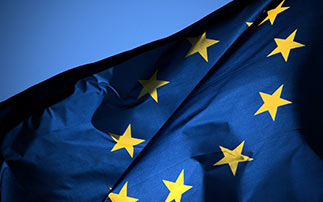European funds are numerous and finance a variety of projects in all European countries. The European Commission and the Member States define the priorities and the budget of the European cohesion policy for the period 2021 to 2027. Project leaders at the national level benefit from part of these funds in the form of European structural and investment funds (ESF). But what are they and what are they used for?
The economic, social and territorial cohesion policy in a few words
The European policy of economic, social and territorial cohesion aims to reduce disparities between the regions of the Member States, to improve the competitiveness of the European Union as a whole and to ensure social inclusion. Created within the framework of the Europe 2020 strategy, for the period 2014-2020, it was intended to support 11 thematic objectives through numerous investment priorities within the European Union. Today, it supports the five priorities defined by the European Commission for the period 2021-2027:
1. A more competitive and intelligent Europe
2. A greener, low-carbon transition to a zero-carbon economy
3. A more connected Europe by improving mobility
4. A more social and inclusive Europe
5. A Europe closer to its citizens by promoting the sustainable and integrated development of all types of territories
This policy is financed by the structural funds and, since 2020, by the Just Transition Fund (FTJ). The latter is the most important tool available to member states to support the transition to a greener and low-emission economy in European regions, with the objective of achieving climate neutrality by 2050.
What are the European Structural and Investment Funds (ESIF)?
The ESIF are financial instruments of regional policy designed to correct imbalances and strengthen the economic cohesion of regions.
The European Regional Development Fund (ERDF)
The ERDF invests mainly in growth. As for the 2014-2020 period, this fund has the largest budget within the ESF. The ERDF aims to address the issues related to the attractiveness and development of territories. Thus, it invests mainly in innovative projects to promote employment, economic growth and improving the competitiveness of SMEs. In addition, the ERDF also finances actions supporting adaptation to climate change.
The European Social Fund (ESF +)
The themes supported by the European Social Fund are mainly aimed at strengthening social inclusion and improving employment and training opportunities. Many projects are therefore directed towards supporting companies in their restructuring or in the establishment of better governance in the labor market. The ESF + also subsidizes actions supporting job seekers and more particularly the employment of young people in order to prevent structural unemployment among young people and to fight against all forms of discrimination in the labor market.
The European Agricultural Fund for Rural Development (EAFRD)
The EAFRD supports rural development within the framework of the Common Agricultural Policy and approaches the specific problems linked to the development of rural areas and the agricultural sector.
The European Maritime, Fisheries and Aquaculture Fund (EMFAF)
The EMFAF intends to allocate funds to encourage the development of a sustainable, innovative and competitive fisheries and aquaculture in the framework of the implementation of the fisheries policy and the integrated maritime policy.
What strategy for allocating European funds in France?
The budget of the FESI of 392 billion euros, allocated within the framework of the European cohesion policy, represents more than half of the multiannual financial framework for the budgetary period from 2021 to 2027. The French envelope for the financial instruments of regional policy for the same period is about 27 billion euros. Indeed, the funds allocated to the ESF + are 6.7 billion euros, while they are 9.1 billion euros for the ERDF. Moreover, France is the European country that benefits the most from the EMFAF.
The choice of allocation of the ESIF funds differs according to each European country. On the French side, these funds are shared between the national and regional levels, with the regional councils and the State as the two main managers.
In France, thanks to the European Structural Funds, many projects have been launched. These projects show concrete achievements to promote economic and social cohesion.




